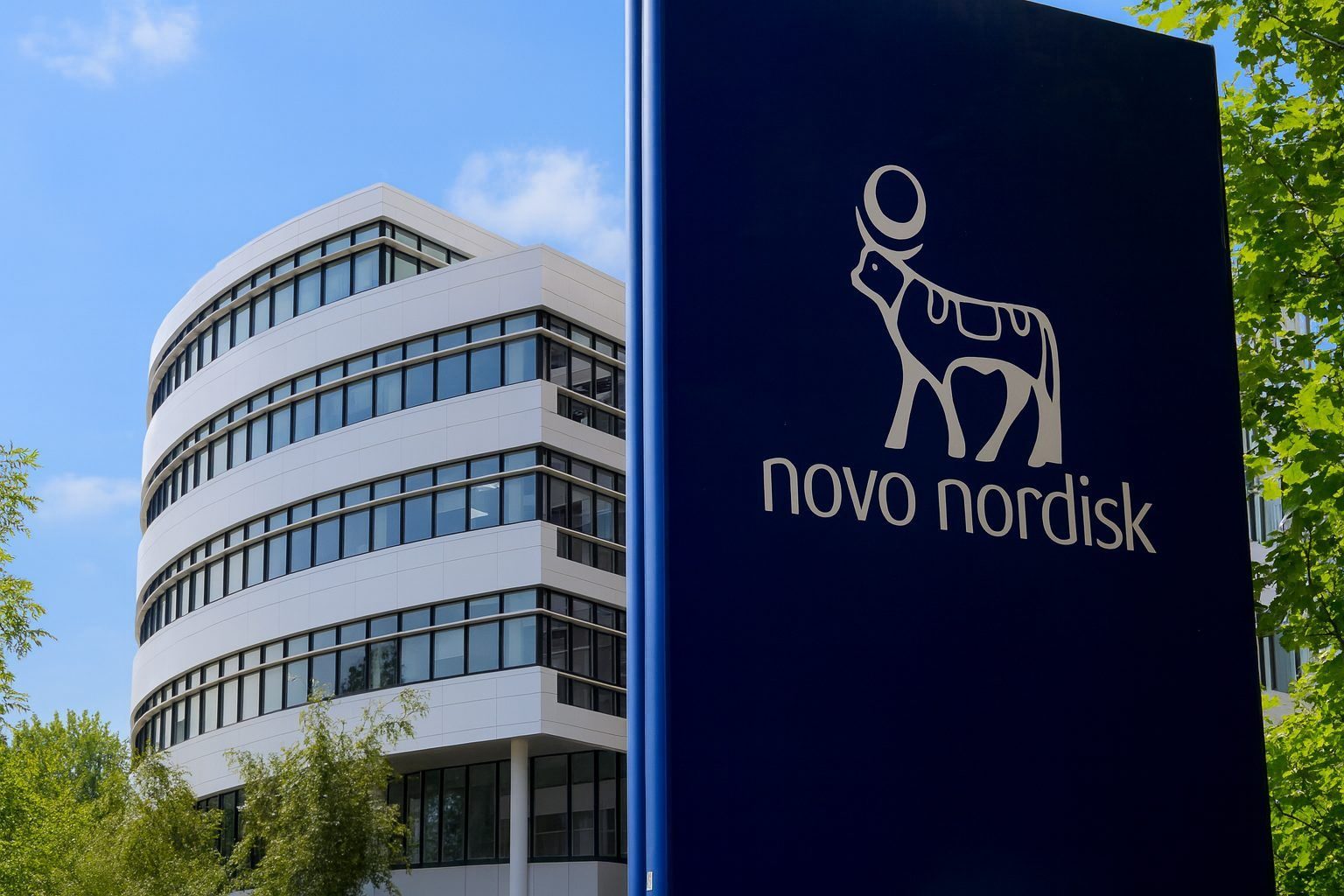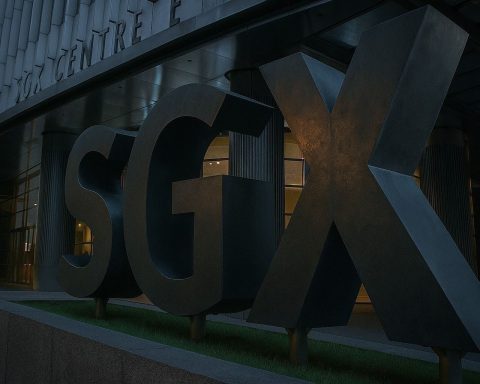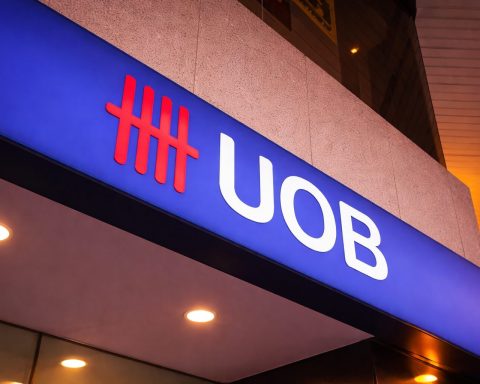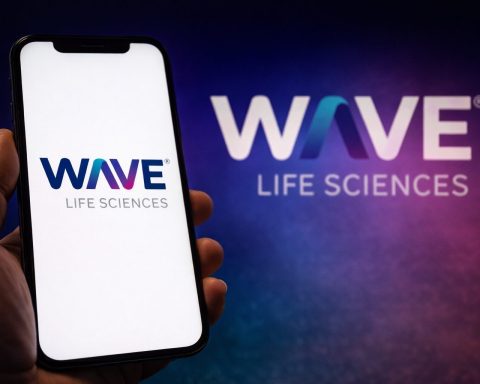Key takeaways
- NVO stock is trading around $47.08 this afternoon, up roughly 4.7% on the day, after fresh mid‑stage data from the experimental obesity drug amycretin. [1]
- The rebound comes less than 24 hours after shares sank more than 5% on failed Alzheimer’s trials for oral semaglutide (Rybelsus). [2]
- Guidance cuts, job reductions and intensifying competition from Eli Lilly still hang over the 2025–2026 outlook, keeping NVO near its 52‑week lows despite today’s bounce. [3]
NVO stock today: price and trading snapshot (Nov. 25, 2025)
As of late‑afternoon trading on Tuesday, November 25, 2025, Novo Nordisk A/S American Depositary Receipts (ADR), ticker NVO on the NYSE, were changing hands at about $47.08, up $2.11 on the session — a gain of roughly 4.7% versus Monday’s close.
Intraday, NVO has:
- Opened: about $46.00
- Traded between: roughly $44.66 and $47.13
- Volume: ~19 million ADRs, indicating very active trading relative to a typical day.
Despite today’s rally, NVO remains down more than 50% over the past 12 months and is trading not far above its 52‑week low around $43, according to BMO Capital data referenced in a note this morning. [4]
That combination — deep drawdown plus sharp single‑day moves — sets the stage for a highly volatile period as investors digest both negative and positive news on Novo Nordisk’s drug pipeline.
Prices and performance figures are intraday and may change by the closing bell.
Why NVO is bouncing: amycretin offers a fresh pipeline story
The main driver of today’s rebound is new mid‑stage trial data for amycretin, Novo Nordisk’s next‑generation obesity and diabetes candidate.
According to results released today, a 36‑week phase 2 study in 448 type 2 diabetes patients showed that once‑weekly injectable amycretin delivered up to about 14.5% body‑weight loss, while an oral version reached around 10%, both clearly ahead of placebo. [5]
Crucially for diabetes care, amycretin also met its primary goal of significantly reducing blood sugar, with close to nine out of ten patients achieving HbA1c below 7%, a widely used treatment target. Side‑effects were mostly mild gastrointestinal issues, and Novo says it plans to move amycretin into late‑stage trials in 2026. [6]
A few points that matter for NVO stock:
- Dual‑hormone mechanism: Amycretin acts on GLP‑1 and amylin, potentially offering stronger appetite suppression and metabolic benefits than drugs that only target GLP‑1, like Ozempic and Wegovy. [7]
- No plateau yet: Analysts highlighted that the weight‑loss curve had not plateaued by 36 weeks, suggesting further weight loss might be achievable with longer treatment. [8]
- Big commercial expectations: One Morningstar estimate cited in Reuters pegs potential peak annual sales around $8 billion by 2034, split between diabetes and obesity, assuming launch near 2029. [9]
It’s not surprising, then, that Novo’s Denmark‑listed shares jumped more than 5% on the amycretin news, with the U.S. ADRs following suit. [10]
In other words: today’s rally is the market re‑pricing a more credible “next‑wave” obesity pipeline, even as near‑term sentiment is still bruised.
The other side of the story: Alzheimer’s failure still stings
Today’s positive headlines arrive less than a day after a major setback.
On Monday, Novo Nordisk announced that two large phase 3 Alzheimer’s trials (EVOKE and EVOKE+) of oral semaglutide (Rybelsus) failed to slow disease progression in patients with early Alzheimer’s. The studies aimed for roughly a 20% slowing of cognitive decline but did not meet that goal. [11]
Key takeaways from the Alzheimer’s news:
- The trials used Rybelsus, the oral form of semaglutide, the same molecule behind Ozempic and Wegovy. [12]
- Novo described the project as a “lottery ticket”–type bet, acknowledging from the start that success would be difficult. [13]
- Shares fell more than 12% intraday and closed about 5.8% lower on Monday, wiping out billions in market value and extending a year‑long slide. [14]
The failure effectively closes off Alzheimer’s as a near‑term growth avenue for semaglutide, though researchers still see GLP‑1 drugs as worth exploring for dementia prevention or other neurodegenerative conditions. [15]
Importantly for shareholders, several analysts quoted in the financial press argued that Monday’s plunge looked like an overreaction, since Alzheimer’s was never central to Novo’s investment case. Today’s amycretin data is helping that argument by showing the core obesity pipeline is still moving forward. [16]
Recent good news beyond amycretin: Wegovy’s liver data
Obesity and diabetes are still the core of the Novo Nordisk story, and that’s where some quieter but meaningful positive data has emerged this month.
On November 10, Novo shared post hoc analyses from the phase 3 ESSENCE trial of Wegovy (semaglutide 2.4 mg) in adults with metabolic dysfunction–associated steatohepatitis (MASH) and liver fibrosis. The analysis suggested that Wegovy’s benefits on liver health markers were not solely explained by weight loss. [17]
ESSENCE is a long, two‑part study:
- Part 1 looked at liver histology after 72 weeks in about 800 patients.
- Part 2 will follow patients out to 240 weeks to see whether Wegovy can reduce hard liver‑related clinical events, with readout expected around 2029. [18]
Wegovy already has accelerated FDA approval in the U.S. for patients with MASH and moderate‑to‑advanced liver fibrosis, excluding cirrhosis, alongside diet and exercise. [19]
For investors, this liver data matters because it:
- Diversifies the semaglutide story beyond weight loss alone.
- Strengthens Novo’s position in a very large metabolic disease category — MASH affects more than 250 million people worldwide, and advanced cases are expected to rise sharply by 2030. [20]
In short, even as Wegovy faces slowing growth in core obesity markets, new indications like MASH could become meaningful demand drivers later in the decade.
Fundamentals and guidance: solid business, slower trajectory
Underneath the headline‑grabbing trial results, Novo Nordisk’s latest numbers show a still‑profitable but decelerating growth story.
Q3 2025 results at a glance
For the third quarter of 2025, Novo Nordisk reported:
- Revenue: about DKK 75.0 billion (roughly $11.7 billion), up around 5% year‑over‑year or 11% in local currencies. [21]
- Net profit: roughly DKK 20.0 billion, down 27% year‑over‑year, while adjusted net profit rose about 5%. [22]
- Operating profit: down about 30% to DKK 23.7 billion, weighed by large one‑off restructuring costs. [23]
- Wegovy sales: up approximately 18% to DKK 20.4 billion, but slightly below analyst expectations. [24]
The company continues to generate very high margins: BMO notes an 83% gross margin and an operating margin in the mid‑40s, although that margin has ticked down compared with prior years. [25]
Guidance cuts and job reductions
Alongside Q3, Novo narrowed and reduced its 2025 outlook:
- Sales growth: now expected at 8–11% (from 8–14% previously).
- Operating profit growth: now 4–7%, versus a prior 4–10% range, both at constant exchange rates. [26]
Management tied this softer guidance to:
- Slower‑than‑anticipated growth for GLP‑1 products in diabetes and obesity
- Pricing pressure and increased rebates
- Restructuring costs and higher investment in future capacity and R&D. [27]
To support the restructuring, Novo announced that it would cut about 9,000 jobs worldwide, including around 5,000 in Denmark, as part of a global transformation program. [28]
For backers of the stock, these moves signal that management is:
- Admitting growth is slowing from hyper‑growth levels, and
- Trying to protect profitability and fund the next generation of obesity and diabetes therapies.
The obesity‑drug arms race: Eli Lilly vs. Novo Nordisk
A big reason NVO has lost more than half its market value this year is that Novo is no longer the undisputed king of GLP‑1 obesity drugs. [29]
Recent data show:
- In the United States, Eli Lilly (LLY) now controls roughly 58% of GLP‑1 prescriptions, compared with about 42% for Novo, according to IQVIA data cited in recent reports. [30]
- Lilly’s products Mounjaro (tirzepatide) and Zepbound have captured share with strong efficacy data and aggressive expansion of supply. [31]
- Analysts expect the global obesity‑drug market to potentially reach $150 billion in annual sales by the end of the decade, making room for multiple successful players — but also intensifying competition. [32]
Amycretin’s dual‑hormone profile is partly a response to that pressure. Lilly is pushing forward with its own amylin‑based candidate, eloralintide, and today’s amycretin data are seen as Novo’s attempt to catch up or leapfrog in that new sub‑class. [33]
So while today’s rebound reflects renewed faith in Novo’s pipeline, it also underscores how much the bar has been raised: investors are no longer satisfied with “good enough” GLP‑1s; they want clear, differentiated best‑in‑class profiles.
What analysts are worried about: pricing, 2026 and beyond
Even with a promising pipeline, the bear case for NVO hasn’t disappeared. BMO’s note this morning, which cut its price target from $50 to $46 while keeping a Market Perform rating, captures many of those concerns. [34]
Among the key risks highlighted:
- Pricing pressure and gross‑to‑net compression
- Higher rebates and discounts, particularly in the U.S., may limit revenue growth even as prescription volumes rise. [35]
- Reimbursement and access uncertainty
- Broader uptake of obesity drugs via Medicare and Medicaid could be delayed or come with tough price concessions. [36]
- Patent and generic risk
- Novo has cautioned that semaglutide compound patents in some international markets will expire around 2026, potentially knocking a few percentage points off sales growth in that year. [37]
- Potential revenue decline in 2026
- BMO warns that a combination of slower GLP‑1 growth, pricing pressure and patent expiries could even lead to year‑over‑year revenue declines in 2026, a scenario that would be a sharp contrast to the last several years. [38]
- Execution risk on restructuring
- The job cuts and transformation program are designed to save money, but large global restructurings often carry operational and cultural risks, especially when a company is simultaneously scaling complex manufacturing networks for biologics. [39]
Put differently: amycretin’s success doesn’t automatically solve Novo’s 2026 problem. It will take time for any new therapy to reach the market, and the company must manage a delicate transition from semaglutide‑dominated growth to a more diversified pipeline.
Sentiment check: from market darling to battleground stock
A year ago, Novo Nordisk was widely seen as a near‑bulletproof GLP‑1 growth story. Today, NVO trades closer to what BMO characterizes as a mid‑teens earnings multiple (around 12–13x near‑term earnings), hardly a hyper‑growth valuation for a company with still‑strong margins and global scale. [40]
Recent media and social‑media coverage reflect this shift:
- Financial outlets have described 2025 as a “rocky year” for Novo, with a brutal share price correction, disappointing trial headlines and a CEO change. [41]
- On Reddit and other forums, NVO has become a trending “debate stock”, with some traders calling the sell‑off overdone and others arguing competitors like Eli Lilly offer better risk‑reward. [42]
Today’s rally is unlikely to settle that debate. Instead, it reinforces NVO’s new identity: not a simple momentum play, but a controversial large‑cap where sentiment can swing 5–10% in a single session on any new datapoint.
Bottom line: what today’s move could mean for NVO shareholders
For existing or prospective investors, here’s how today’s news fits into the bigger picture:
The bull case
- Pipeline credibility is improving. Amycretin’s strong mid‑stage results in both weight loss and blood sugar control give Novo a realistic path to next‑generation therapies beyond semaglutide. [43]
- Semaglutide still has room to run. Wegovy’s expanding label — including MASH with liver fibrosis — and continued growth in obesity and diabetes should keep GLP‑1 drugs central to Novo’s revenue mix for years. [44]
- Valuation has reset. After a share‑price collapse of more than 50% from last year’s peak, NVO is no longer priced for perfection, potentially giving long‑term investors a better entry point if they believe in the pipeline and GLP‑1 market growth. [45]
The bear case
- Growth is slowing and guidance is lower. Even with obesity demand, the company expects only high‑single‑digit to low‑double‑digit sales growth this year and possibly weaker trends in 2026. [46]
- Competition is fierce. Eli Lilly currently leads in U.S. GLP‑1 market share and is also advancing its own next‑generation candidates. Novo must execute flawlessly to avoid further erosion of its competitive position. [47]
- Pricing, patent and policy risks are real. U.S. reimbursement decisions, patent expiries and the rise of compounded semaglutide products could all pressure revenue and margins just as Novo ramps up spending on new plants and trials. [48]
What today’s rally really signals
Today’s action doesn’t erase yesterday’s Alzheimer’s disappointment, nor does it guarantee amycretin will make it smoothly through phase 3 and onto the market.
What it does show is that:
- Markets still reward convincing clinical data, even in a stock with damaged sentiment.
- Novo Nordisk is far from finished in the obesity race — but it now has to fight much harder for every point of market share and every turn of multiple.
For readers watching NVO:
- If you’re focused on short‑term trading, expect continued volatility around every pipeline update and policy headline.
- If you’re thinking in multi‑year horizons, the key questions are whether Novo can
- convert amycretin and other next‑generation candidates into real products, and
- navigate 2026’s pricing and patent challenges without a serious earnings reset.
As always, this article is for informational purposes only and is not investment advice. Anyone considering buying or selling NVO should weigh these factors against their own risk tolerance and time horizon and, if needed, consult a qualified financial professional.
References
1. www.reuters.com, 2. www.reuters.com, 3. www.reuters.com, 4. m.investing.com, 5. www.reuters.com, 6. www.reuters.com, 7. www.reuters.com, 8. www.reuters.com, 9. www.reuters.com, 10. www.reuters.com, 11. www.reuters.com, 12. www.reuters.com, 13. www.reuters.com, 14. www.reuters.com, 15. www.reuters.com, 16. www.reuters.com, 17. finviz.com, 18. finviz.com, 19. finviz.com, 20. finviz.com, 21. coincentral.com, 22. www.gurufocus.com, 23. coincentral.com, 24. coincentral.com, 25. m.investing.com, 26. www.reuters.com, 27. www.reuters.com, 28. coincentral.com, 29. www.theguardian.com, 30. www.emarketer.com, 31. www.spglobal.com, 32. www.axios.com, 33. www.reuters.com, 34. m.investing.com, 35. m.investing.com, 36. m.investing.com, 37. www.investing.com, 38. m.investing.com, 39. coincentral.com, 40. m.investing.com, 41. www.theguardian.com, 42. www.insidermonkey.com, 43. www.reuters.com, 44. finviz.com, 45. m.investing.com, 46. www.reuters.com, 47. www.emarketer.com, 48. coincentral.com










